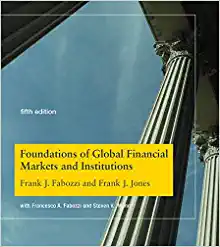Answered step by step
Verified Expert Solution
Question
1 Approved Answer
6. 10. Assume you follow the value function 1;(33) q/at/Zifasisagain(x20) _ 721f|$lifscisaloss (a: 6. Assume you follow the value function t/ 2 if is a


6. Assume you follow the value function t/ 2 if is a gain (x 2 0) 2N,.Gl if .T is a loss (x < O) Frame 1: In addition to everything you own currently, consider yourself richer by $1000. You now face the choice between GI of winning $1000 with probability 0.5 and winning nothing with probability 0.5 and Sl of winning $500 for sure. Frame 2: In addition to everything you own currently, consider yourself richer by $2000. You now face the choice between G2 of losing $1000 with probability 0.5 and losing nothing with probability 0.5 and S2 of losing $500 for sure. a) Using $100() as your reference point, calculate the expected value of GI. b) Using $100() as your reference point, calculate the expected value of Sl. c) Using $200() as your reference point, calculate the expected value of G2. d) Using $200() as your reference point, calculate the expected value of S2. e) When asked these questions, survey respondents chose Sl 84% of the time in Frame 1, yet G2 69% of the time in Frame 2. To an economist who does not accept prospect theory, why is this result puzzling? 7. Suppose an urn contains 90 balls, 30 of which are known to be red, and 60 which are known to be either yellow or black, but in an unknown proportion. Explain why it is irrational to prefer Bl to B2, and also prefer B4 to B3, where Bl = A ball is drawn an you receive $100 if ball is red, B2 = A ball is drawn an you receive $100 if ball is black, B3 = A ball is drawn an you receive $100 if ball is red or yellow, B4 = A ball is drawn an you receive $100 if ball is black or yellow. 8. We know that, on average, experimental participants are indifferent between $15 today and $20 in a month, $50 in a year, and $100 in 10 years. a) Calculate the monthly discount rate if you are indifferent between $15 today and $20 in a month. b) Calculate the monthly discount rate if you are indifferent between $15 today and $100 in a year. c) Calculate the monthly discount rate if you are indifferent between $15 today and $1000 in 10 years. d) Why do the results of a), b), and c) support a model of hyperbolic discounting? What property of decision making does exponential discounting have that hyperbolic discounting does not? 9. Using a graph 10. Consider the ultimatum game. Suppose we observe a proposer offer 40% of their endowment to their responder. a) Your friend believes this is heartwarming evidence that humans behave altruistically. You, a brutal skeptic and cynic, reply that you are not willing to accept their conclusion. What other reason could you give that explains the proposer's willingness to share? b) A second friend tells you that the proposer is acting irrationally. What would lead them to this conclusion?
Step by Step Solution
There are 3 Steps involved in it
Step: 1

Get Instant Access to Expert-Tailored Solutions
See step-by-step solutions with expert insights and AI powered tools for academic success
Step: 2

Step: 3

Ace Your Homework with AI
Get the answers you need in no time with our AI-driven, step-by-step assistance
Get Started


